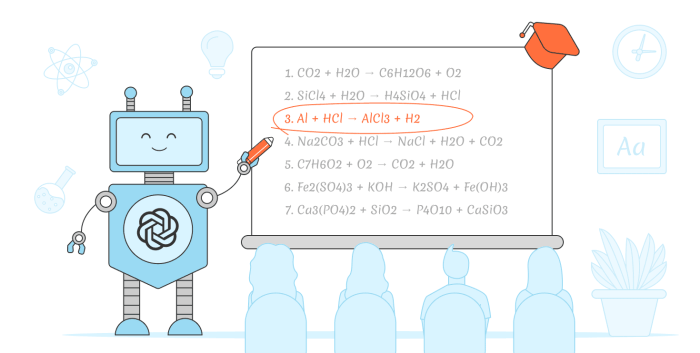AI administrative tools for education are transforming how schools operate, automating tasks and enhancing efficiency. From streamlining student enrollment to personalizing learning experiences, these tools are revolutionizing educational administration. This post explores the various types of AI tools, their potential benefits, and the challenges of implementation.
This post will delve into the specific applications of AI in education, examining how AI can improve teacher scheduling, resource allocation, and communication between teachers, students, and parents. We’ll also consider the impact of these tools on educational staff and students, exploring both the positive and negative aspects. Finally, we’ll discuss the challenges and considerations in implementing these tools, along with future trends and predictions for the role of AI in education.
Introduction to AI Administrative Tools in Education
AI administrative tools are rapidly transforming educational institutions, streamlining processes and freeing up valuable staff time. These tools leverage artificial intelligence to automate tasks previously handled manually, improving efficiency and accuracy across various administrative functions. From scheduling classes to managing student records, AI is poised to revolutionize how educational institutions operate.These tools offer a powerful solution to the increasing demands on educational administrators.
By automating routine tasks, AI allows staff to focus on strategic initiatives and student support, ultimately leading to a more effective and engaging learning environment. The potential benefits are significant, and the impact on the future of education is substantial.
Overview of AI Administrative Tools
AI administrative tools in education encompass a wide range of applications designed to automate and optimize various administrative tasks. These tools utilize machine learning algorithms to process data, analyze patterns, and make predictions, allowing for more effective and efficient management of resources and operations.
Types of Automated Administrative Tasks
AI tools can automate a diverse range of administrative tasks, freeing up valuable time for educators and administrators. These tasks include:
- Scheduling classes and meetings:
- Managing student records and data:
- Processing financial transactions:
- Generating reports and analytics:
AI algorithms can analyze available resources, student schedules, and teacher availability to optimize class schedules and meeting arrangements. This reduces the time and effort required for manual scheduling and minimizes conflicts.
AI can streamline the process of collecting, organizing, and analyzing student data, enabling more effective tracking of student progress and performance. This includes automated enrollment, grade recording, and attendance tracking.
AI can automate tasks such as invoice processing, expense reporting, and budget management, ensuring accuracy and reducing errors. This is crucial for maintaining financial transparency and accountability.
AI tools can analyze large datasets to generate insightful reports on student performance, program effectiveness, and resource utilization. This data-driven approach enables informed decision-making and strategic planning.
Potential Benefits of Using AI Tools
The adoption of AI administrative tools in education offers significant benefits, including:
- Increased efficiency and productivity:
- Improved accuracy and reduced errors:
- Enhanced decision-making capabilities:
- Cost savings:
Automating routine tasks allows administrators to focus on higher-level strategic planning and student support, maximizing the use of their time.
AI’s ability to process large volumes of data with high precision minimizes human error, ensuring data integrity and accuracy in administrative operations.
AI-generated reports and analytics provide valuable insights into student performance and program effectiveness, facilitating data-driven decision-making for more strategic planning.
By automating tasks and reducing manual labor, AI tools can significantly reduce operational costs, freeing up resources for other essential needs.
Roles of AI in Improving Efficiency and Accuracy
AI can play several roles in improving efficiency and accuracy within educational institutions.
- Data analysis and reporting:
- Predictive modeling:
- Automated task execution:
AI can analyze large datasets to identify trends, patterns, and insights, enabling more informed decision-making and strategic planning.
AI algorithms can predict future trends and needs, such as enrollment projections or resource requirements, allowing for proactive planning and resource allocation.
AI administrative tools are revolutionizing education, streamlining tasks like scheduling and communication. However, industry shifts are also happening, like the recent news that Adam has left MKG Media Group, adam bids mkg media group adieu. These changes highlight the dynamic nature of the modern business landscape, impacting various sectors, including the ongoing development of innovative AI tools for education.
AI can automate routine tasks such as scheduling, data entry, and report generation, freeing up staff time for more important activities.
Comparison of AI Administrative Tools
| Tool Type | Features | Capabilities | Pros | Cons |
|---|---|---|---|---|
| Student Information System (SIS) with AI Integration | Automated enrollment, grade entry, attendance tracking, personalized learning recommendations | Data analysis, predictive modeling, personalized learning paths | Increased efficiency, reduced errors, personalized learning support | Potential data privacy concerns, high initial investment |
| AI-powered Scheduling Software | Automated class scheduling, conflict resolution, resource optimization | Real-time scheduling adjustments, dynamic resource allocation | Reduced scheduling conflicts, optimized resource utilization, faster scheduling process | Dependence on accurate data input, potential for algorithm bias |
| Automated Financial Management System | Invoice processing, expense reporting, budget tracking | Financial forecasting, anomaly detection, automated payment processing | Improved financial transparency, reduced errors, faster processing | Requires robust security measures, potential for system glitches |
Specific AI Applications in Education Administration: Ai Administrative Tools For Education

AI is rapidly transforming various sectors, and education is no exception. Implementing AI in administrative tasks can free up educators to focus more on teaching and student well-being. This efficiency translates to improved learning outcomes and a more positive educational experience for everyone involved. By automating repetitive tasks and providing data-driven insights, AI can create a more dynamic and personalized learning environment.AI-powered administrative tools can significantly enhance the effectiveness and efficiency of educational institutions.
These tools can automate tasks, analyze data, and provide valuable insights, allowing educators to concentrate on what matters most – nurturing students’ academic and personal growth.
AI-Driven Student Enrollment Automation
Automated enrollment systems using AI can significantly reduce administrative burdens. These systems can collect and verify student data, process applications, and even generate enrollment confirmations—all with minimal human intervention. This process not only speeds up enrollment but also reduces the potential for errors. AI algorithms can also identify potential issues or inconsistencies in applications, flagging them for review before they reach the human staff, improving the overall accuracy of the enrollment process.
Streamlining Teacher Scheduling and Assignment Management
AI algorithms can optimize teacher scheduling, considering factors such as teacher availability, subject expertise, and student needs. This process can lead to a more balanced workload distribution and ensure that teachers are assigned to classrooms and subjects where they can best support their students. AI tools can also automate the creation and assignment of assignments, reducing the manual effort required from teachers.
This frees up valuable time for teachers to focus on developing engaging learning activities and providing personalized support to students.
Improving Resource Allocation in Educational Institutions
AI can analyze data on student performance, teacher availability, and resource utilization to optimize resource allocation. This data-driven approach can help identify areas where resources are overused or underused, leading to more efficient allocation. For instance, AI could predict the demand for specific learning materials and proactively adjust inventory levels, minimizing waste and ensuring that resources are available when and where they are needed.
Personalized Learning Experiences for Students
AI can personalize learning experiences by analyzing student performance data, identifying individual strengths and weaknesses, and adapting learning materials accordingly. AI-powered platforms can tailor content and pace to individual needs, ensuring that students are challenged appropriately and receive the support they require. This level of personalization can create a more engaging and effective learning experience for each student. Examples of AI tools include adaptive learning platforms that adjust the difficulty and pace of lessons based on student responses.
Facilitating Communication Between Teachers, Students, and Parents
AI-powered communication tools can enhance communication between teachers, students, and parents. These tools can automate the process of sending updates, notifications, and reminders, ensuring that everyone is informed and engaged. AI chatbots can also answer frequently asked questions, providing instant support and reducing the workload on teachers. This streamlined communication can create a stronger sense of community and foster a more collaborative learning environment.
Specific AI Applications and Use Cases
| AI Application | Use Case | Benefits | Challenges |
|---|---|---|---|
| Automated Enrollment System | Collecting and verifying student data, processing applications, generating confirmations. | Increased efficiency, reduced errors, faster enrollment. | Data security, potential bias in algorithms. |
| Teacher Scheduling System | Optimizing teacher schedules based on availability, subject expertise, and student needs. | Balanced workload, improved resource allocation, more efficient scheduling. | Data accuracy, potential for unforeseen disruptions. |
| Assignment Management System | Automating the creation, assignment, and tracking of assignments. | Reduced administrative burden, improved assignment organization. | Ensuring assignments align with curriculum, potential for plagiarism detection issues. |
| Resource Allocation System | Predicting resource demand, optimizing inventory levels, and ensuring resources are available when needed. | Reduced waste, improved resource utilization, efficient allocation. | Data accuracy, potentially high initial investment. |
| Personalized Learning Platform | Tailoring learning materials and pace to individual student needs. | Enhanced learning experience, improved engagement, personalized support. | Data privacy, potential for algorithm bias, ensuring accessibility. |
| Communication Platform | Automating communication between teachers, students, and parents. | Improved communication, reduced workload on teachers, stronger community. | Ensuring data security, maintaining user experience. |
Impact of AI on Educational Staff and Students
AI is rapidly transforming educational landscapes, impacting both teachers and students in profound ways. From automating administrative tasks to personalizing learning experiences, AI tools are poised to revolutionize how we teach and learn. Understanding these impacts, both positive and negative, is crucial for navigating this evolving educational environment effectively.The implementation of AI in education is not just about efficiency gains; it’s about creating more equitable and personalized learning opportunities for all students.
By streamlining administrative tasks and providing targeted support, AI can free up valuable time for educators to focus on crucial aspects of student development.
Impact on Teacher Workload
AI tools can significantly reduce the administrative burden on teachers. Automating tasks like grading objective assessments, scheduling appointments, and generating personalized learning plans allows teachers to dedicate more time to individualized instruction, student interaction, and fostering critical thinking skills. This shift in workload distribution can lead to increased job satisfaction and potentially attract more individuals to the teaching profession.
For example, AI-powered grading systems can quickly and accurately evaluate multiple-choice tests, freeing up teachers to provide detailed feedback on essay responses or address individual student needs.
AI administrative tools are revolutionizing education, streamlining tasks and freeing up valuable time for teachers. However, consider this: the top 7 tv viewership statistics to make you look away, highlighting just how much time we spend passively consuming media, might give us pause. top 7 tv viewership statistics to make you look away Ultimately, these AI tools can empower educators to focus on what truly matters: student success and personalized learning, rather than getting bogged down in tedious administrative tasks.
Impact on Student Support Services
AI can revolutionize student support services by providing personalized and timely interventions. AI-powered chatbots can answer student questions, provide immediate support, and connect students with relevant resources, available 24/7. This proactive approach can address student needs before they escalate, improving academic performance and overall well-being. For example, an AI system could detect early signs of struggling students and automatically recommend targeted interventions, such as tutoring sessions or additional learning materials.
AI administrative tools for education are becoming increasingly popular, but how do you convince potential users that you’re an expert in this field? Just like in any market, demonstrating expertise is key. Building credibility often involves showcasing a clear understanding of the practical applications, which might involve case studies or testimonials. This includes knowing how to use tools like AI-powered grading systems, or schedule management platforms.
For a deeper dive into what convinces buyers that someone is a visible expert, check out this helpful resource: what convinces buyers that someone is a visible expert. Ultimately, a strong online presence and demonstrable experience are essential for effectively marketing and selling AI administrative tools to schools and districts.
Impact on Personalized Learning
AI can tailor learning experiences to individual student needs and learning styles. Adaptive learning platforms use AI to assess student progress and adjust the pace and content of lessons accordingly. This personalized approach can significantly improve student engagement and learning outcomes. For example, an AI-powered platform might identify a student struggling with a specific mathematical concept and automatically provide supplementary resources and practice exercises, ensuring the student receives the targeted support needed to master the concept.
Impact on Access to Learning Resources, Ai administrative tools for education
AI can empower students with access to a wider range of learning resources. AI-powered language translation tools can break down language barriers, allowing students to access global knowledge and perspectives. Furthermore, AI-driven research tools can facilitate quick and efficient access to information, empowering students to explore topics in greater depth. For instance, an AI-powered research tool could quickly summarize complex academic papers, making the information more accessible and digestible for students.
Ethical Concerns
The ethical use of AI in education requires careful consideration. Bias in algorithms could lead to discriminatory outcomes, potentially exacerbating existing inequalities. Privacy concerns surrounding student data are paramount. Transparent and responsible development and deployment of AI tools are crucial to ensure fair and equitable access to education.
Table: Positive and Negative Impacts of AI on Teachers and Students
| Impact | Teachers | Students |
|---|---|---|
| Positive | Reduced administrative workload, increased time for individualized instruction, improved efficiency in grading, access to personalized data, support for diverse learning needs. | Personalized learning experiences, increased access to resources, enhanced support services, improved learning outcomes, better understanding of individual needs, 24/7 support, language barriers diminished. |
| Negative | Potential for job displacement if not properly implemented, reliance on technology and potential for distraction, need for ongoing professional development, algorithmic bias could impact fairness, concern for data privacy and security. | Over-reliance on technology, potential for decreased critical thinking skills if not supplemented with human interaction, concerns about data privacy and security, algorithmic bias potentially impacting learning experiences, lack of human connection and interaction. |
Challenges and Considerations in Implementing AI Tools
Integrating AI tools into educational systems presents a unique set of challenges, requiring careful planning and consideration. These tools offer significant potential to enhance efficiency and personalize learning, but their successful implementation hinges on addressing potential technical, privacy, and logistical hurdles. Navigating these complexities is crucial for maximizing the benefits of AI while mitigating potential drawbacks.
Technical Challenges of Integration
Educational institutions often operate on diverse and sometimes legacy systems. Integrating AI tools seamlessly into these existing infrastructures can be technically complex. Data formats may not be compatible, requiring significant effort to standardize and transform data. Interoperability between different software applications and platforms also presents a considerable challenge. Furthermore, ensuring the AI tools function reliably and efficiently within the constraints of existing network infrastructure and processing power is crucial.
For example, a school with a limited bandwidth might find real-time AI-powered feedback systems difficult to implement.
Data Privacy Concerns
AI systems in education rely heavily on student data, including academic records, behavioral patterns, and potentially even personal information. Maintaining the privacy and security of this data is paramount. Concerns surrounding data breaches, unauthorized access, and the ethical use of student data must be addressed proactively. Strict adherence to data protection regulations, like FERPA (Family Educational Rights and Privacy Act) in the US, is essential.
Data Security and User Privacy Approaches
Implementing robust data security measures is critical. This includes encryption, access controls, and regular security audits. A layered approach, combining various security protocols, is recommended to create a multi-faceted defense against potential threats. For example, schools could use secure cloud storage for sensitive student data and implement multi-factor authentication for staff accessing the AI tools. Transparency about data collection and usage practices is also crucial for building trust with parents and students.
Staff Training and Support
Effective implementation of AI tools necessitates comprehensive training for educational staff. Training should equip teachers and administrators with the knowledge and skills needed to use the tools effectively and ethically. This should go beyond basic technical operation, encompassing the pedagogical implications of using AI in the classroom. For instance, training could cover how to interpret AI-generated insights and how to integrate AI tools into existing teaching methodologies.
Support structures, like dedicated help desks or online forums, are also vital to ensure ongoing assistance and address emerging questions.
Addressing Stakeholder Resistance
Resistance to change is a natural human response. Stakeholders, including teachers, parents, and students, may harbor concerns about the potential impact of AI tools on their roles and responsibilities. Open communication, transparency, and demonstrating the value proposition of the AI tools are essential to addressing these concerns. For instance, schools can demonstrate how AI tools can free up teachers’ time for more individualized instruction, or how AI-powered personalized learning pathways can cater to diverse learning styles.
Potential Challenges and Solutions
| Challenge | Solution |
|---|---|
| Incompatible data formats | Develop standardized data formats and data migration tools. |
| Limited network infrastructure | Implement cloud-based AI tools or optimize existing network infrastructure. |
| Data breaches and unauthorized access | Implement strong encryption, access controls, and regular security audits. |
| Lack of staff training and support | Develop comprehensive training programs and establish support structures. |
| Resistance to change among stakeholders | Engage stakeholders in the implementation process, demonstrate the value of the tools, and address concerns transparently. |
Future Trends and Predictions
AI tools in education administration are rapidly evolving, poised to reshape the learning landscape in profound ways. The next few years will see a significant acceleration in the adoption and refinement of these tools, leading to more personalized learning experiences and enhanced educational research. This evolution will be driven by emerging technologies and a growing understanding of how AI can best support both educators and students.
Personalized Learning Experiences
AI’s ability to analyze vast amounts of data about student performance, learning styles, and preferences will allow for even more sophisticated personalization of learning experiences. Adaptive learning platforms, powered by AI, will dynamically adjust content, pace, and difficulty to meet the unique needs of each student. For example, an AI system could identify a student struggling with a particular math concept and proactively recommend supplementary resources or alternative teaching methods.
This targeted approach could significantly improve learning outcomes for all students, particularly those who may be falling behind or learning at different paces.
Impact of Emerging Technologies
Emerging technologies like the metaverse and virtual reality (VR) are poised to significantly impact AI administrative tools. AI algorithms can be used to create immersive and interactive learning environments within the metaverse, tailoring virtual field trips and simulations to individual student needs. VR can enhance the learning process in subjects like science and history by providing realistic and engaging experiences that traditional methods may not be able to replicate.
AI can also play a critical role in managing and facilitating these immersive experiences.
Impact on Educational Research and Development
AI can revolutionize educational research and development. By analyzing large datasets of student performance, AI can identify patterns and trends that would be difficult or impossible for human researchers to discern. This data-driven approach can lead to more effective teaching methods, curriculum development, and assessment strategies. For example, AI can analyze student responses to questions, identify areas where students are struggling, and suggest ways to improve the quality of learning materials.
Future Trends in AI for Education Administration
| Trend | Description | Potential Impact |
|---|---|---|
| Adaptive Learning Platforms | AI-powered platforms will dynamically adjust learning content, pace, and difficulty based on student performance and needs. | Increased personalized learning, improved student engagement, and enhanced learning outcomes. |
| Automated Grading and Feedback | AI will automate the grading of objective assessments, providing timely and constructive feedback to students. | Reduced workload for educators, improved efficiency in grading, and faster feedback loops for students. |
| Personalized Learning Pathways | AI algorithms will create customized learning paths for each student based on their strengths, weaknesses, and learning styles. | Improved student engagement, tailored learning experiences, and enhanced student outcomes. |
| AI-Driven Student Support Systems | AI will identify students at risk and provide personalized support tailored to their needs, potentially through chatbots or virtual tutors. | Early intervention for students struggling academically, improved support systems, and reduced dropout rates. |
| Intelligent Tutoring Systems | AI-powered tutoring systems will provide personalized guidance and support to students, answering questions, and providing feedback in real-time. | Increased access to individualized support, improved learning outcomes, and reduced reliance on traditional tutoring services. |
Last Recap

In conclusion, AI administrative tools offer exciting possibilities for enhancing educational efficiency and personalization. While challenges related to implementation and ethical considerations exist, the potential benefits of AI in education are substantial. As AI technology continues to evolve, its integration into educational systems promises to revolutionize learning and create more effective and personalized learning experiences for all.






